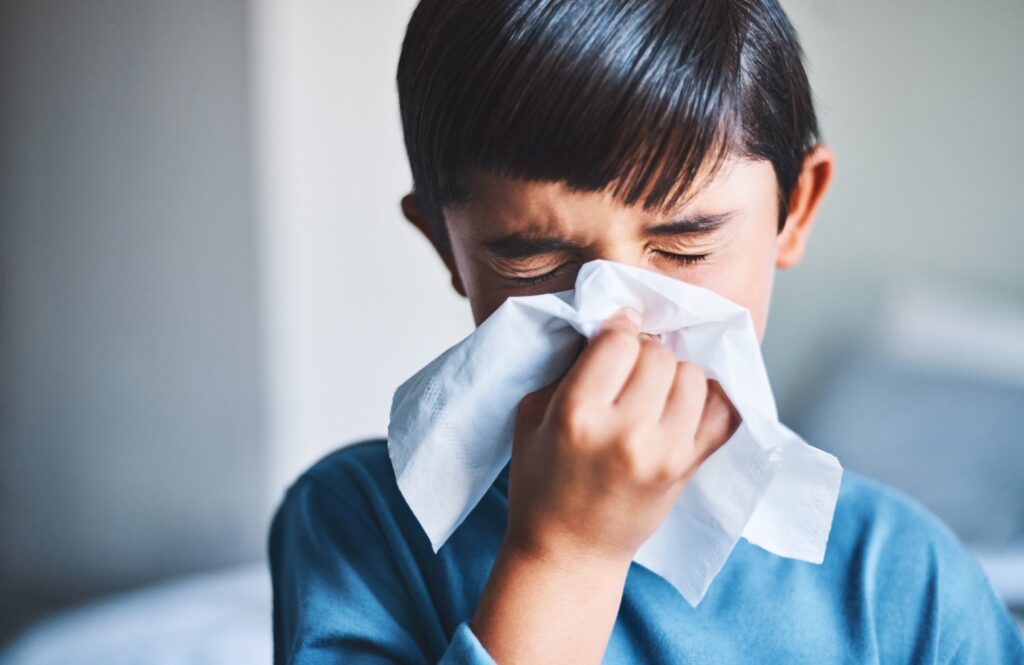You might be concerned if this is the first time you have noticed a birthmark on your baby. But over 80% of the children are born with some kind of birthmark. Usually, these marks are harmless and don’t require treatment.
But some birthmarks need medical inspection and treatment. Let us help you figure out if your child’s birthmark should be something to worry about.
What are birthmarks?
A birthmark is any patch of coloured skin that presents at birth or shortly afterward. These patches can range from brown to black or even blue or be a bright shade of red. There’s no fixed size for these birthmarks. They can range from a bit of freckle to patches covering entire parts of the baby’s body.
What causes birthmarks to develop?
There’s no exact reason for the formation of most birthmarks. Doctors tend to point out that they form purely by chance. However, some birthmarks can develop due to underlying medical problems. You need to be concerned about these birthmarks because they would likely require treatment.
Birthmarks are NOT caused by the behavior of mothers before birth. Things you do or don’t do wouldn’t affect the formation of a birthmark. They aren’t caused by birth trauma, either.
What are the types of birthmarks?
There are two main types of birthmarks:
- Vascular – birthmarks form due to incorrect blood vessel formation.
- Pigmented – birthmarks appear due to the overproduction of pigment in the skin.
These two birthmarks can be further subdivided into more specific categories.
Vascular birthmarks
There are three vascular birthmarks: macular stains, hemangiomas, and port wine stains.
- Macular stains are prevalent, with over 33% of babies having one. They are usually flat and bright pink or red; they appear around the scalp, eyelids, or neck. They are harmless and go away entirely when your baby is 18 months old.
- Hemangiomas are rarer and only affect about 2-5% of babies. They are collections of abnormally developing blood vessels. They are also known as “Strawberry marks” and tend to multiply during the first year of your baby’s life. However, afterward, they shrink slowly on their own. And within 5-10 years, they wouldn’t leave any trace of them.
Because they will regress without treatment, it’s usually not advised to perform surgery to remove them. But in some cases, hemangiomas can form close to vital organs that can become life-threatening or severely reduce the quality of life. That’s when doctors might advise surgery to remove them.
Hemangiomas can also be treated using drugs, but they have nasty side effects, which is another thing to consider.
- Port wine stains are the rarest of vascular birthmarks. Only about 3 in every 1000 babies are born with one of these. They form due to defects in capillary formation – these are the thinnest blood vessels. Unlike hemangiomas, these birthmarks don’t go away with time. In fact, they tend to get darker.
These birthmarks can increase the risk of medical conditions like eye problems, seizures, or developmental delays. They can be treated with laser therapy, but the doctors assess the urgency for that on a case-to-case basis.
Pigmented birthmarks
Pigmented birthmarks also have three types: congenital melanocytic nevi, dermal melanosis, and café-au-lait spots.
- Congenital melanocytic nevi are the moles that are present at birth. While they appear harmless, they are a cause of concern because they can develop into skin cancers called melanomas. Large moles have a greater chance of turning into cancerous formations. Therefore, it’s best to get your baby’s moles checked by a doctor. If diagnosed in time, moles can be treated using surgery to remove abnormal skin cells as much as possible and reduce cancer risk.
- Dermal melanosis are patches of blueish-grey color that resemble bruises. They generally appear around the lower back area or the buttocks of dark-skinned babies. However, these are completely harmless and don’t require any medical attention. They tend to completely go away on their own by the time your baby is 2 years old.
- 3. Café-au-lait spots are light brown spots that are very common in newborns. Up to 50% of babies are born with at least a café-au-lait spot. You may notice that their size increases over time, but they are not cancerous like moles. These spots don’t require treatment. However, if your baby has a lot of them, you should get them checked for neurofibromatosis 1. It’s a disorder in which nerves don’t form correctly.
When to call a doctor?
If you notice any marks increasing in size, getting darker, or spreading to other body parts, it’s best to check them. Moreover, you need to consult a doctor if your baby complains about itching, pain, or any other discomfort. If the marks get infected, seek medical treatment at once.
An insight from mamahood
Birthmarks are not always a cause for concern. But you would be right to be a little worried about them. Usually, they are harmless and would go away on their own. But if you see them increasing in size, shape, numbers, or intensity, you should consult a doctor immediately.








